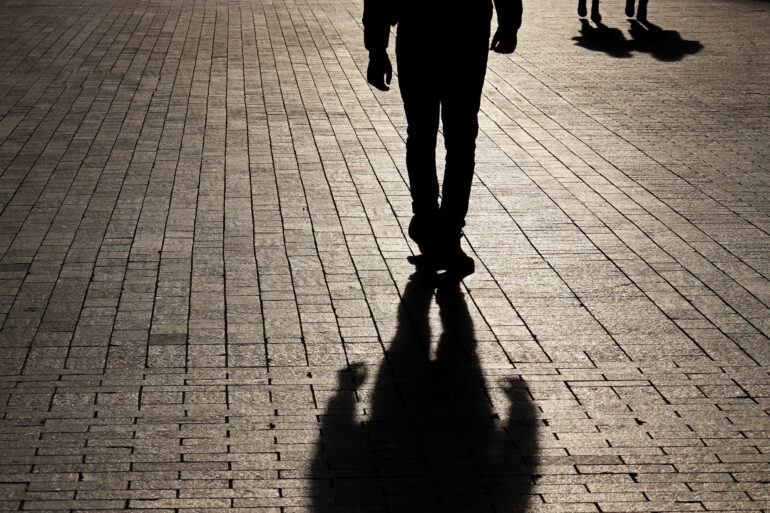During the pandemic, most types of violent crime decreased. But new research out of the University of Pennsylvania and the Naval Postgraduate School (NPS) published in the Proceedings of the National Academy of Sciences found that in 2020 risk of street crime victimization increased, with the possibility of robbery and assault in public places jumping by 15% to 30%.
“The chance of this sort of attack was still very small,” says Penn criminologist Aaron Chalfin, co-author on the paper. “But it’s true that at that point in time people were less safe outside.”
Chalfin and Maxim Massenkoff, an NPS assistant professor and paper co-author, decided to investigate these statistics after seeing the disturbing—and somewhat confusing—2020 homicide trend. “Homicides went up the most that they’d ever gone up, by 25% to 30%,” Chalfin says. “Rarely do you see murder rates go one direction and other crimes go another. Usually when one is up, everything is up. When one is down, everything’s down. They tend to move together.”
Yet occurrences of all other violent crimes dropped. The researchers wanted to understand this divergence and whether, in the early pandemic days, it affected how safe people were when they left their homes.
“We don’t often give this idea of crimes per capita a second thought. But why per capita? It’s meant to capture a notion of risk because otherwise any big area would seem more dangerous than a small area,” Massenkoff says. This shorthand may have become less reliable during the pandemic, he says. “If risk is what we’re after, we needed to adjust for the fact that people were far less likely to venture outside at that time. It’s a fundamentally simple question: We know we want a denominator when we measure crime rate, but what should that be?”
Chalfin and Massenkoff used several approaches to evaluate changes to victimization risk. First, they analyzed crimes known to law enforcement using data from the FBI’s Uniform Crime Reporting Program and the National Crime Victimization Survey. They then zeroed in on serious crimes that took place “in public,” which they defined as anything not within the confines of a residential building or connected property, including streets, parks, alleyways, commercial establishments, and office buildings.
To measure total time in public, Chalfin and Massenkoff turned to new anonymized cellphone mobility data. They also used time-use data, for which respondents reported how they spent the past 24 hours.
The cellphone and survey data, combined with the different crime sources, suggest the same conclusion: In March 2020, public victimization risk matched what it had been in March 2019, but April 2020 looked significantly different than April 2019. Street crimes such as assault and robbery dropped by more than 30% yet the risk of experiencing these skyrocketed by 40%.
This elevated risk continued throughout the summer of 2020, though to a slightly lesser degree. All told, for the 10 months between March and December of that year, incidence of public violence dropped by 19% compared to the previous year, but the risk of victimization was up by about 14%.
“We were trying to resolve what was really happening,” Chalfin says. The researchers determined that, despite lower crime levels, the threat of violence people might experience outside their homes had increased.
The analysis doesn’t explain why there was greater risk, says Chalfin. “Was it frustration over COVID? Something to do with the police? Loss of trust in societal institutions? Maybe just fewer eyes on the street. We make no claims about what it was.” They do know, however, that it wasn’t about people simply reporting fewer crimes, a factor their analysis refuted. They also ruled out the notion that the mix of people spending time in public—for instance, a group with a higher baseline risk of victimization—might have played a role.
These findings point to the fact that looking at one dataset in a vacuum, even if it’s one that’s commonly used, can lead to incorrect conclusions; in this case, Chalfin says, crime rate on its own was masking the public health issue at play, something people were likely feeling and noticing regardless of what the “official” crime data suggested.
“My view is, we shouldn’t bury our head in the sand about this or use a creative reading of the data to deny it,” he says. “It’s just a question of what do we want to do now? Different political ideologies have different ideas; surely, we can come to some consensus that works for a given city or given county.”
More information:
Maxim Massenkoff et al, Activity-adjusted crime rates show that public safety worsened in 2020, Proceedings of the National Academy of Sciences (2022). DOI: 10.1073/pnas.2208598119
Provided by
University of Pennsylvania
Citation:
Despite lower crime rates in 2020, risk of victimization grew (2022, November 9)



